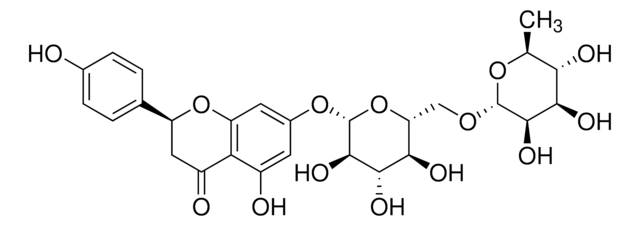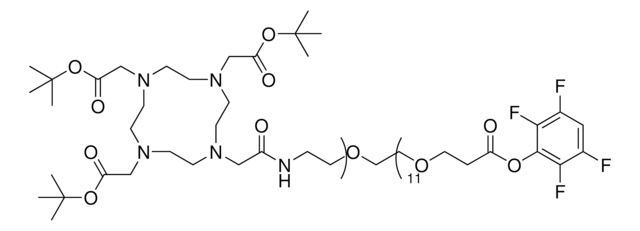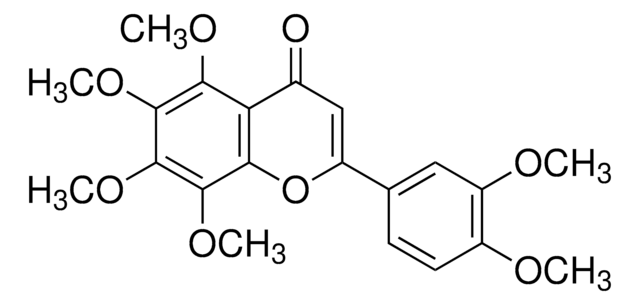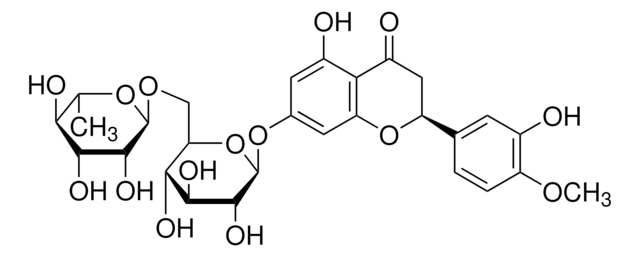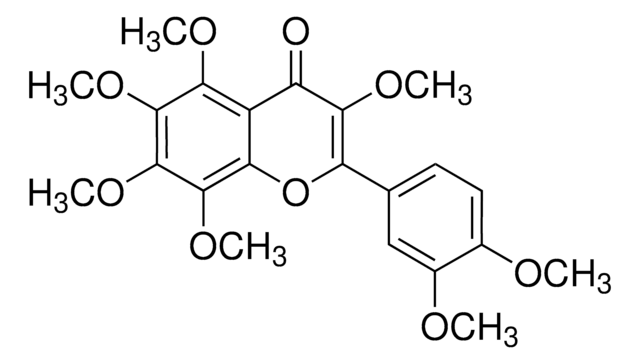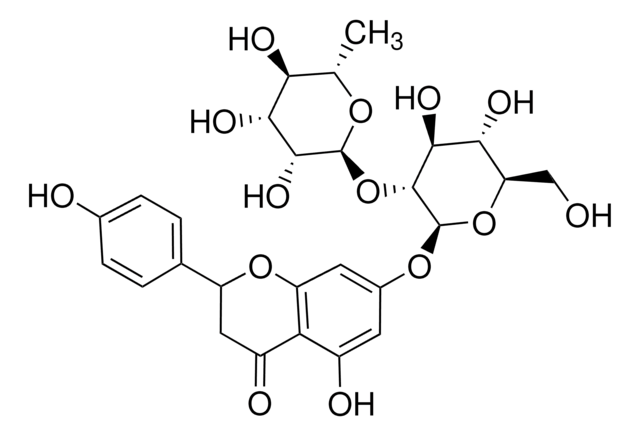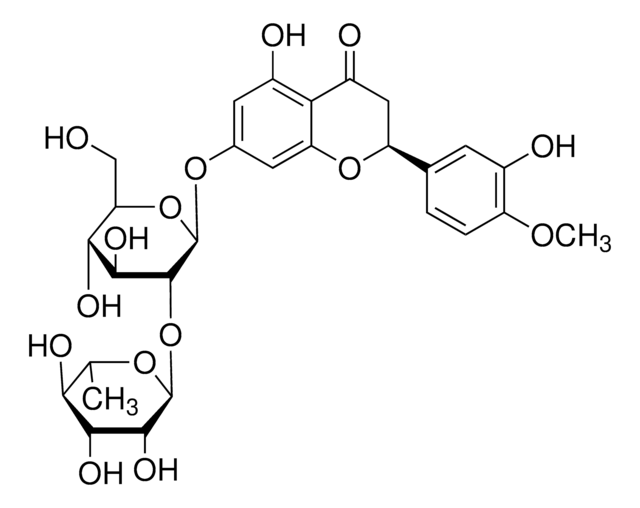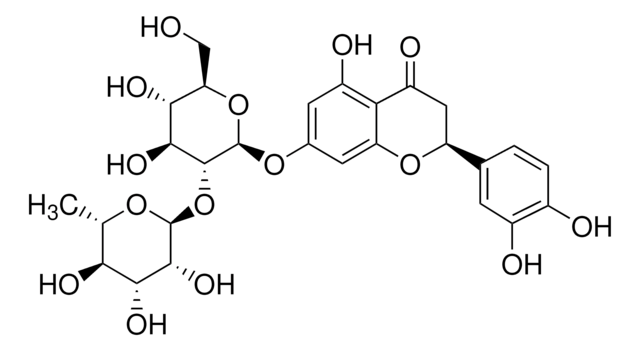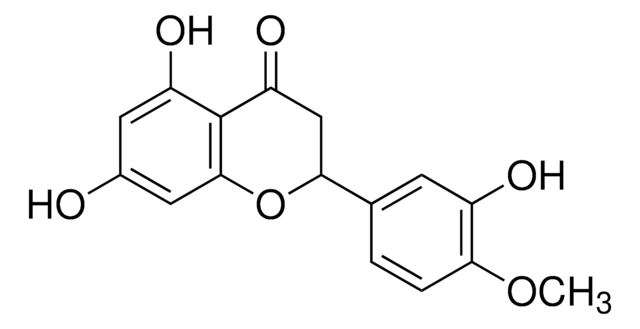Wichtige Dokumente
SMB00321
Narirutin
≥98% (HPLC)
Synonym(e):
Narirutin, Isonaringin, Naringenin-rutinosid
About This Item
Empfohlene Produkte
Qualitätsniveau
Assay
≥98% (HPLC)
Form
powder
mp (Schmelzpunkt)
180 °C
Anwendung(en)
metabolomics
vitamins, nutraceuticals, and natural products
SMILES String
OC1=CC=C([C@@H]2CC(C(C(O)=CC(O[C@@H]3O[C@H](CO[C@H]4[C@H](O)[C@H](O)[C@@H](O)[C@H](C)O4)[C@@H](O)[C@H](O)[C@H]3O)=C5)=C5O2)=O)C=C1
InChI
1S/C27H32O14/c1-10-20(31)22(33)24(35)26(38-10)37-9-18-21(32)23(34)25(36)27(41-18)39-13-6-14(29)19-15(30)8-16(40-17(19)7-13)11-2-4-12(28)5-3-11/h2-7,10,16,18,20-29,31-36H,8-9H2,1H3/t10-,16-,18+,20-,21+,22+,23-,24+,25+,26+,27+/m0/s1
InChIKey
HXTFHSYLYXVTHC-AJHDJQPGSA-N
Suchen Sie nach ähnlichen Produkten? Aufrufen Leitfaden zum Produktvergleich
Verwandte Kategorien
Allgemeine Beschreibung
Anwendung
Biochem./physiol. Wirkung
Lagerklassenschlüssel
11 - Combustible Solids
WGK
WGK 3
Flammpunkt (°F)
Not applicable
Flammpunkt (°C)
Not applicable
Hier finden Sie alle aktuellen Versionen:
Besitzen Sie dieses Produkt bereits?
In der Dokumentenbibliothek finden Sie die Dokumentation zu den Produkten, die Sie kürzlich erworben haben.
Kunden haben sich ebenfalls angesehen
Unser Team von Wissenschaftlern verfügt über Erfahrung in allen Forschungsbereichen einschließlich Life Science, Materialwissenschaften, chemischer Synthese, Chromatographie, Analytik und vielen mehr..
Setzen Sie sich mit dem technischen Dienst in Verbindung.